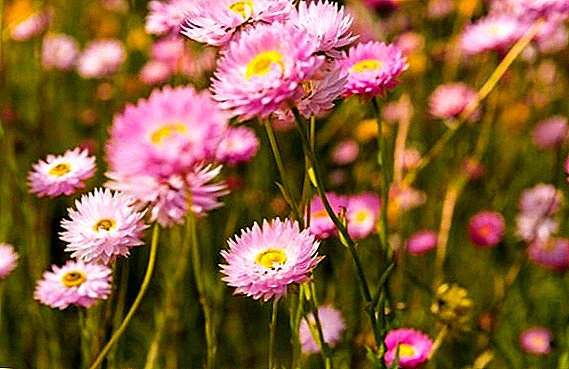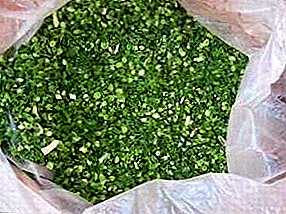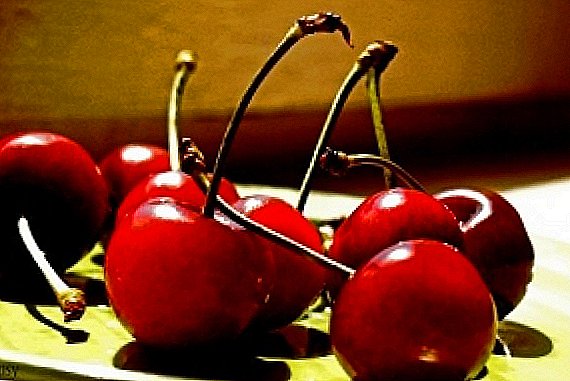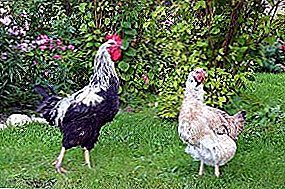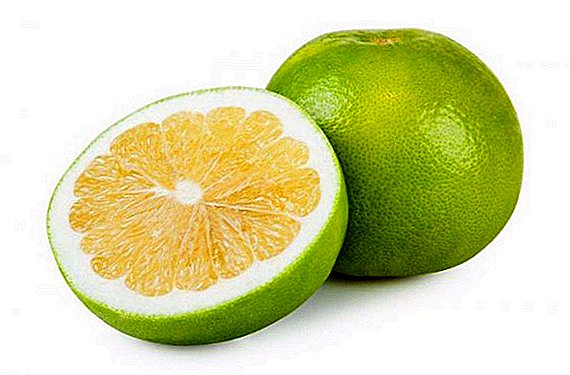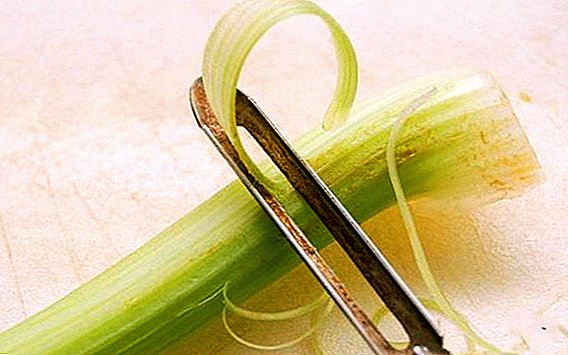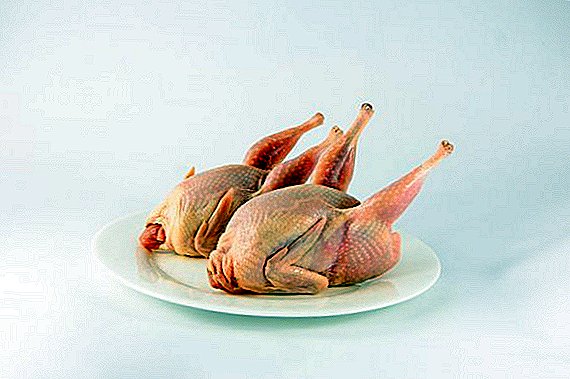
That summer has passed! Do gardeners cares - full mouth. How to save the harvest, so much so that with the benefit of all loved ones? How to prepare a vegetable? Carrots recognized by all "queen" of autumn. Sweet, savory, juicy and crunchy - you will lick your fingers, but capricious! It is faster than all root crops to wither and rot. It is pursued by white and black rot, and it gets a little warmer and tries to germinate again.
Is it possible to cope with this problem? You can, if you follow certain rules in preparing carrots for storage and during direct storage.
Timely cleaning
 You need to remove the carrots before frost, while the weather is warm and dry. Carrots intended for storage, try to sow the average or late maturity. About the best varieties suitable for long-term storage, we are told here.
You need to remove the carrots before frost, while the weather is warm and dry. Carrots intended for storage, try to sow the average or late maturity. About the best varieties suitable for long-term storage, we are told here.
Do not throw away the seed packaging in the spring and then you will know for sure how much your carrot will still grow. If the packaging has not been preserved, it is possible to determine the time of harvesting by the appearance of the topper. The lower leaves of the tops began to turn yellow - do not yawn, gather the harvest!
About when to remove carrots from the garden and how to do it correctly, read here.
What is the best time for?
An unripe vegetable will not benefit your body - it has not yet managed to acquire a sufficient amount of sugars. And overripe, on the contrary, has accumulated sugars and amino acids in excess - the capacity decreases and the root crop rots faster. Sweeter carrots - a tasty morsel for rodents and insects.
Collecting Rules
- Carrots undermine in the ridge with a pitchfork, so you damage the roots less. Gently pry with a fork and pull it out of the soil for the tops.
- As soon as you dug carrots - immediately sort out. All overgrown and small, as well as damaged fruits should not be deposited. The structure of the vegetable should be dense, uniform, crisp at the break and bright orange.
Attention! Shake the soil from the roots very carefully, do not knock them together. This can lead to cracks, which will adversely affect the quality of carrots.
Literate pruning
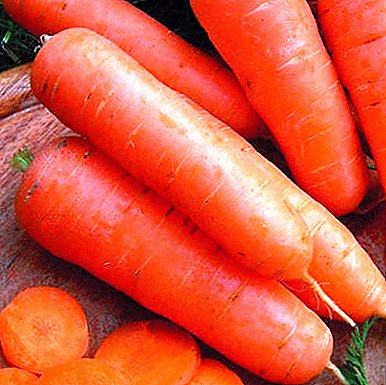 After harvesting and sorting carrots, you need to immediately cut the tops. Trimming is done in stages:
After harvesting and sorting carrots, you need to immediately cut the tops. Trimming is done in stages:
- The tops are cut to the head of a vegetable.
- After drying - the head is cut off by 1 centimeter, completely removing the growth point.
This should be done with a very sharp knife, so that the cut is even and smooth, so that it is better to “draw out” during drying. Such root crops will be the most delicious and juicy in the winter - the crust formed will retain moisture and all the nutrients inside.
More information about the features of pruning carrots can be found here.
Drying
Drying roots is also better in stages:
- Immediately after harvesting the carrots and pruning them first, place the vegetables right there in the garden, in the sun, and hold for a couple of hours.
- As soon as you cut the growth point of the carrot, remove the roots to dry for a longer time. Place the carrots in a dark ventilated place and dry for about 7-9 days.
- Then another sorting follows. Now all the “flaws” of the primary sorting are clearly visible. Faded fruits, cracked and tainted, come to light. After this "quarantine" carrots can be sent to the next stage of preparation for storage.
How to disinfect?
Do I need to wash vegetables before processing? No, if the carrots are well dried, then all the particles of the earth and small debris are easily shaken off (we told more about the need to wash the carrots before being sent for storage here). But the need to sanitize root crops. The easiest way to make this is potassium permanganate.
- Dissolve "potassium permanganate" with water to a dark purple color.
- Make processing in the pelvis large capacity. Put carrots in the solution and soak for 2 hours.
- Complete the procedure with one more drying, now final.
Ways of laying
There are many proven ways to store carrots.
Sand
The most common and simplest ingredient used for storage is sand:
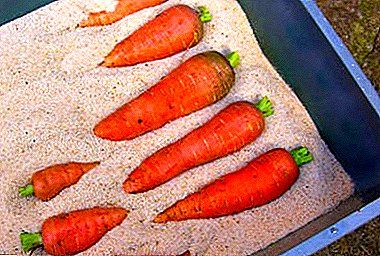 He needs clean with dry. Pour sand a layer of three centimeters on the floor, put a layer of carrots and again - sand and so on until the end. Such a pyramid can be built up to 75 centimeters, it’s already irrational above.
He needs clean with dry. Pour sand a layer of three centimeters on the floor, put a layer of carrots and again - sand and so on until the end. Such a pyramid can be built up to 75 centimeters, it’s already irrational above.- Although many gardeners believe that it is better to store vegetables in the wet sand. They think that carrots are so juicier.
Both options have the right to life.
Crates
For this method you need boxes or cardboard boxes:
- Carrots are placed in small batches (not more than 20 kilograms) in the existing container.
- Close tightly and set at a short distance from the basement walls.
- On the floor is also better to put a small stand. Condensate may collect on the floor and walls and in no case should you let the boxes and drawers get wet, otherwise the carrot will germinate. For the same reason, do not make vents in the boxes.
This method is very convenient if you dug a lot of carrots, and you have a small basement.
Sawdust
Coniferous sawdust contains volatile production, which suppress the appearance of fungi and bacteria, therefore, they are an excellent filler for boxes of carrots intended for long-term storage. The process of placing vegetables for storage is identical to sanding root vegetables.
Onion Husk
The original method - the use of onion peel:
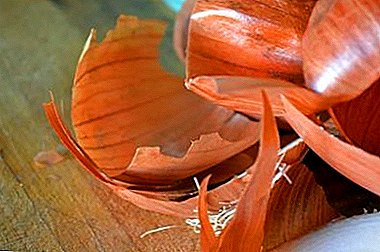 Vegetables bagged, sprinkled with husks.
Vegetables bagged, sprinkled with husks.- Shake it all together thoroughly so that each carrot rolls in the husk.
Onion peel is hygroscopic and at the same time acts as an antiseptic, protecting carrots from rotting and microorganisms.
Clay
Quite dirty, but still a very effective way of "lying" carrots in winter. Clay "shirt" will help the vegetable to remain as good as possible.
- Dilute the clay with water to a mushy state, dip each carrot and put it to dry. Fuss a lot, but the effect is worth it!
- Dried carrots, already in a clay casing, are put in boxes and lowered into the basement.
Garden bed
A very interesting way to preserve the harvest - leave it in the garden! To risk the whole harvest, of course, is not worth it. But part of it can be left until spring.
- The tops of carrots left to "freeze" are cut, leaving no tails.
- A bed with root crops is warmed - covered with sand, a film is put on it.
- Then this whole structure is flooded with peat or spruce, you can apply humus.
In winter, you will hardly be able to try such a carrot, but in the spring and up to the new harvest your garden bed will delight the whole family with fresh and juicy carrots.
Learn more about how to keep carrots in the garden until spring, read here, and in this article we talked about all possible ways to store carrots in the ground.
Creating the right conditions
In order for the carrots to be stored qualitatively and for a long time, it is necessary to withstand certain storage parameters - humidity, storage temperature.
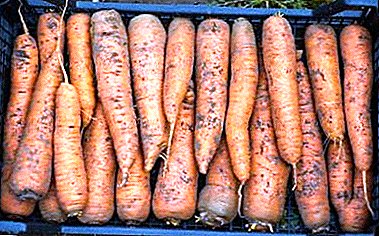 The optimal temperature for storing carrots is from 0 to +4 degrees. If the temperature rises higher, the carrot will begin to germinate and wither. If the temperature drops, the carrot will just freeze, and after thawing, it will rot.
The optimal temperature for storing carrots is from 0 to +4 degrees. If the temperature rises higher, the carrot will begin to germinate and wither. If the temperature drops, the carrot will just freeze, and after thawing, it will rot.- You must maintain normal humidity in your basement. For carrots, this rate is defined as 60%. This is fraught again with the germination of the root and its rotting. To maintain the desired humidity, hygroscopic materials are used (sand, sawdust, onion peel, etc.).
There are a lot of substandard carrots? Do not rush to throw away such vegetables. Such a vegetable can also be prepared for storage, it is important to know how to do it. Wash the roots, peel and peel. Then put in plastic containers for freezing or plastic bags and send in the freezer. In winter, you have ready carrots for any application. More information about freezing carrots for the winter can be found here.
Attention! If you make some effort and try, then keep the harvest on the shoulder of each! Subject to the rules - any vegetables retain a maximum of vitamins and substances useful to humans.
You see - how many "troubles" with this queen of autumn. But it's worth it! What kind of soup without carrots? And not only! In winter, you will delight your family with a tasty juicy carrot, make healthy juice and lots of salads from it. Sweet and crunchy carrots to you in the winter!


 He needs clean with dry. Pour sand a layer of three centimeters on the floor, put a layer of carrots and again - sand and so on until the end. Such a pyramid can be built up to 75 centimeters, it’s already irrational above.
He needs clean with dry. Pour sand a layer of three centimeters on the floor, put a layer of carrots and again - sand and so on until the end. Such a pyramid can be built up to 75 centimeters, it’s already irrational above. Vegetables bagged, sprinkled with husks.
Vegetables bagged, sprinkled with husks. The optimal temperature for storing carrots is from 0 to +4 degrees. If the temperature rises higher, the carrot will begin to germinate and wither. If the temperature drops, the carrot will just freeze, and after thawing, it will rot.
The optimal temperature for storing carrots is from 0 to +4 degrees. If the temperature rises higher, the carrot will begin to germinate and wither. If the temperature drops, the carrot will just freeze, and after thawing, it will rot.